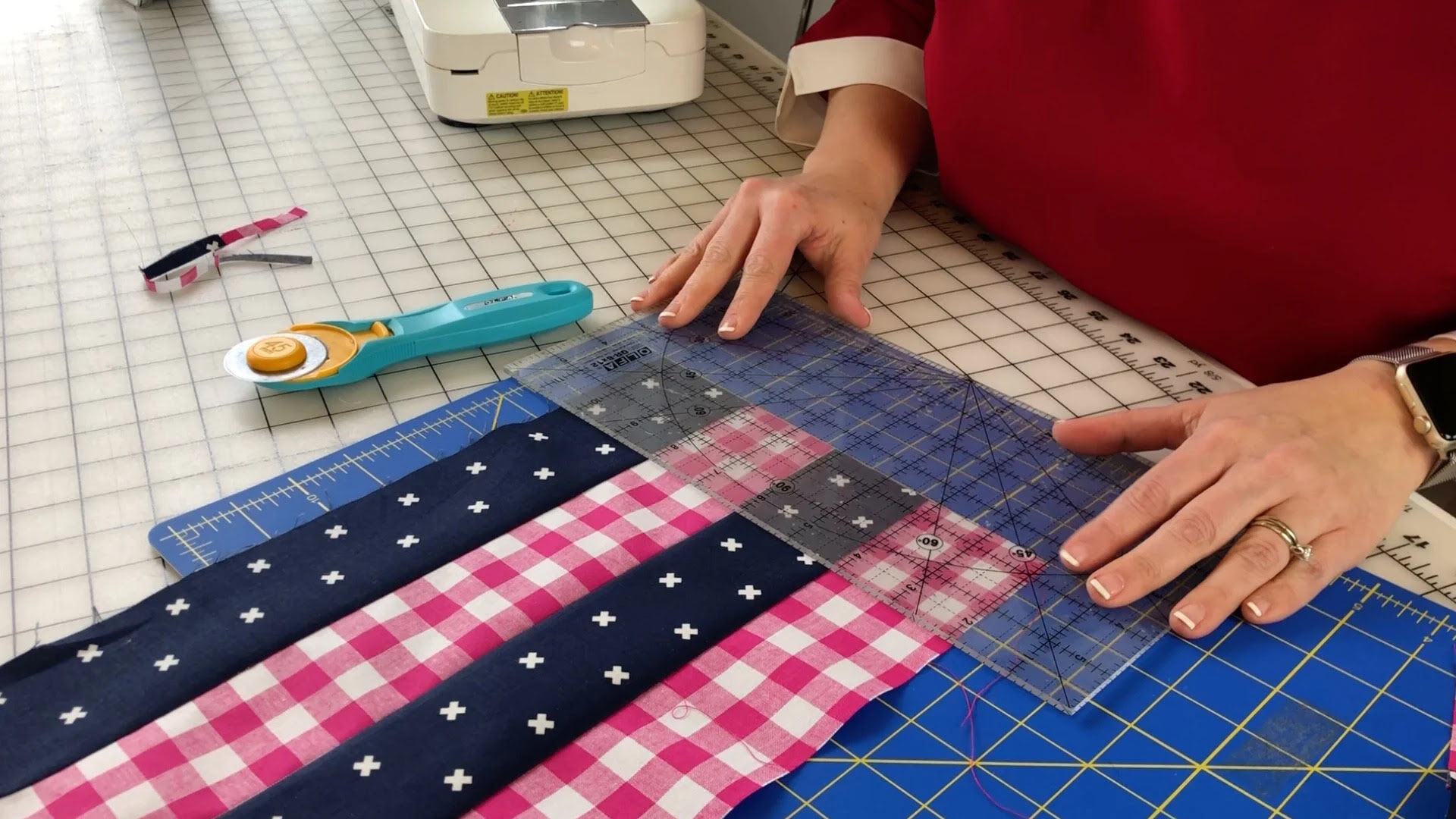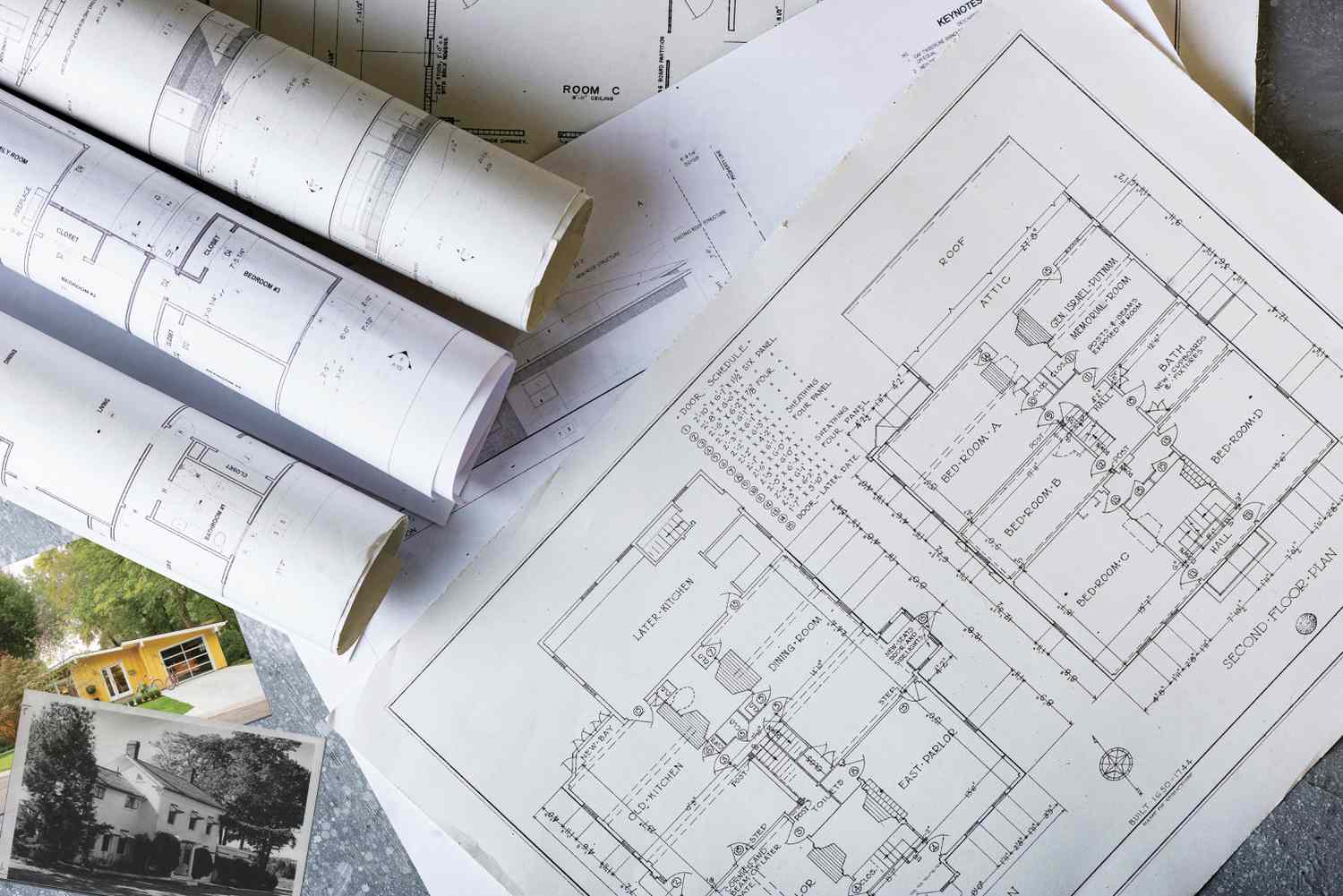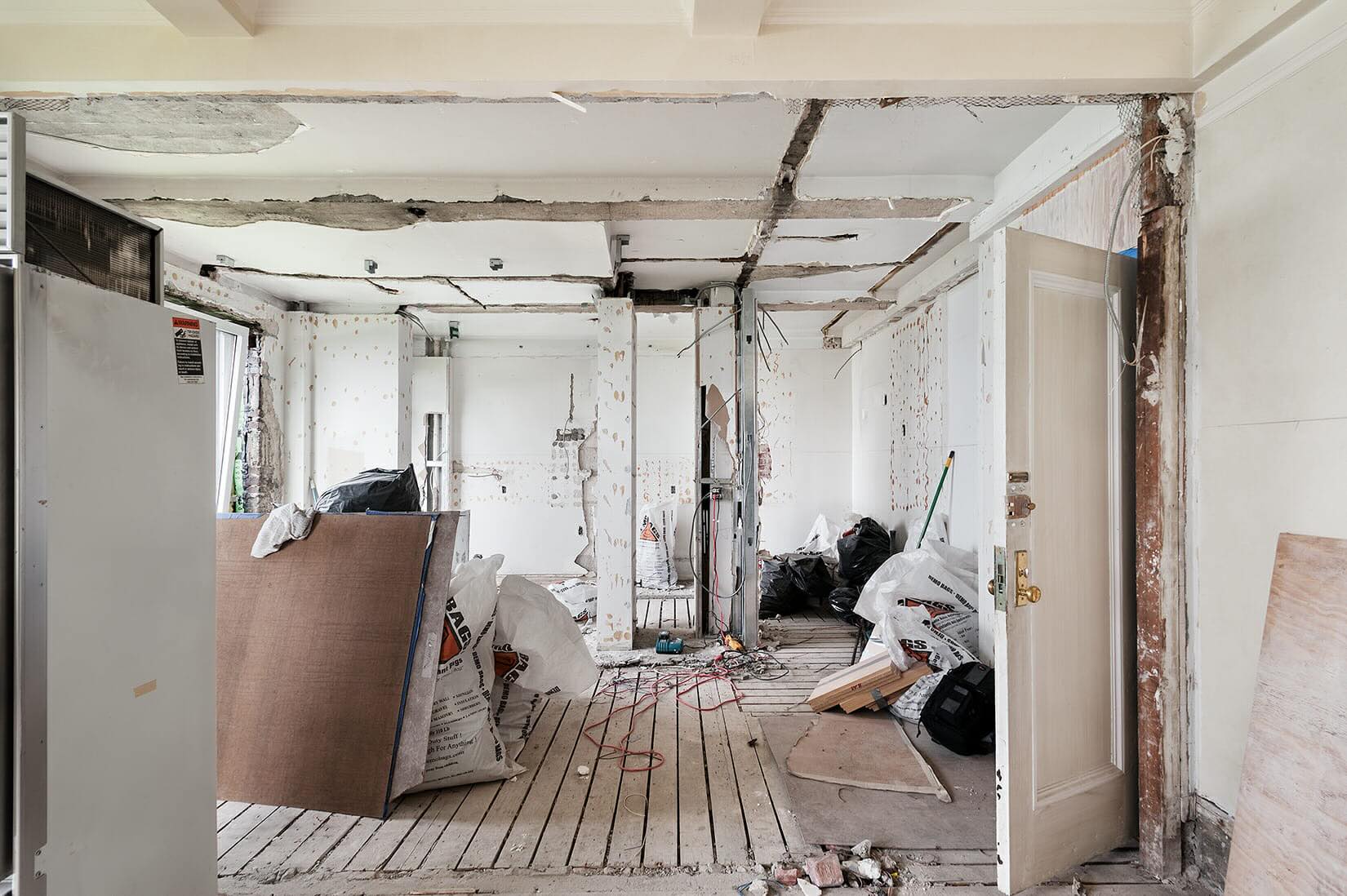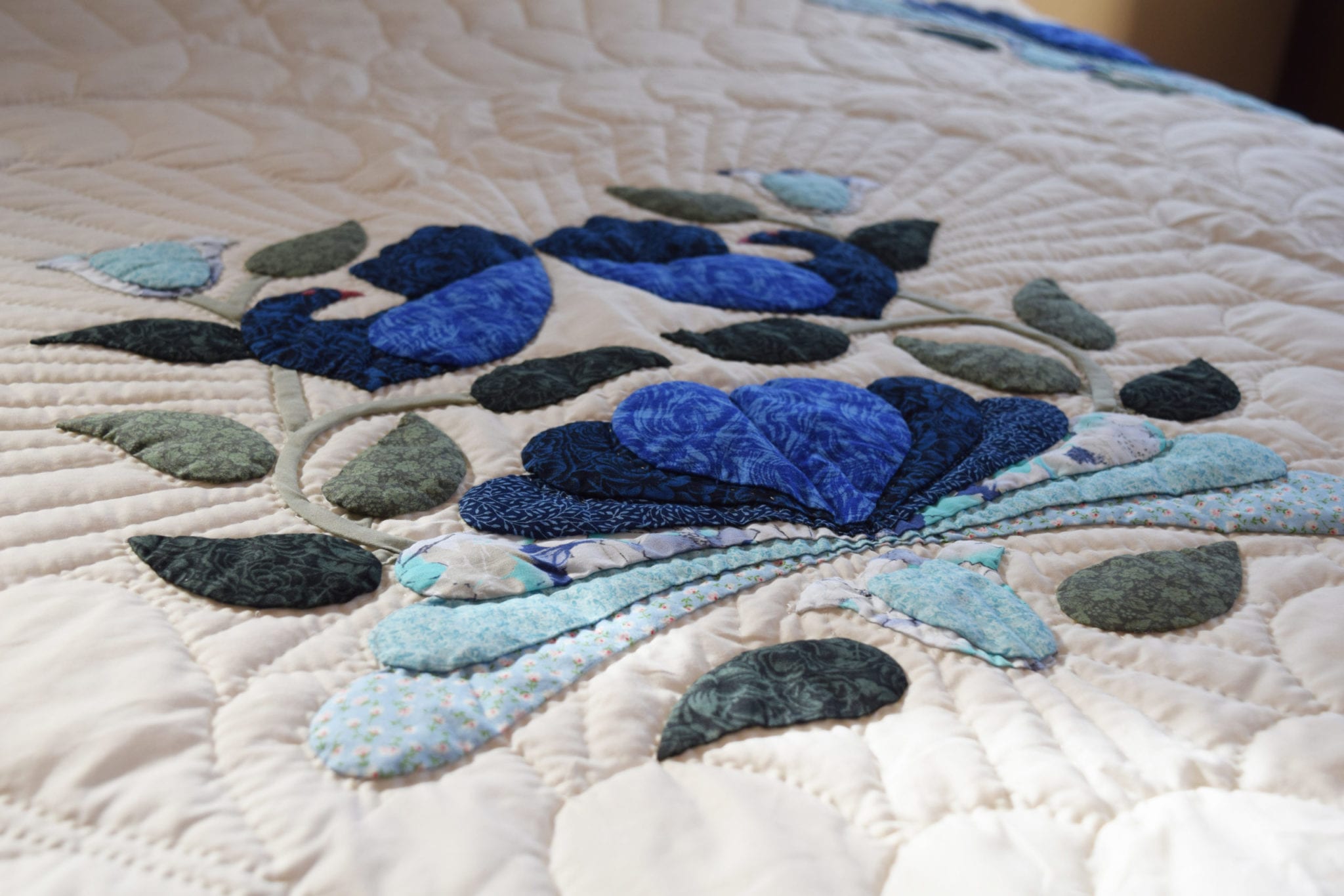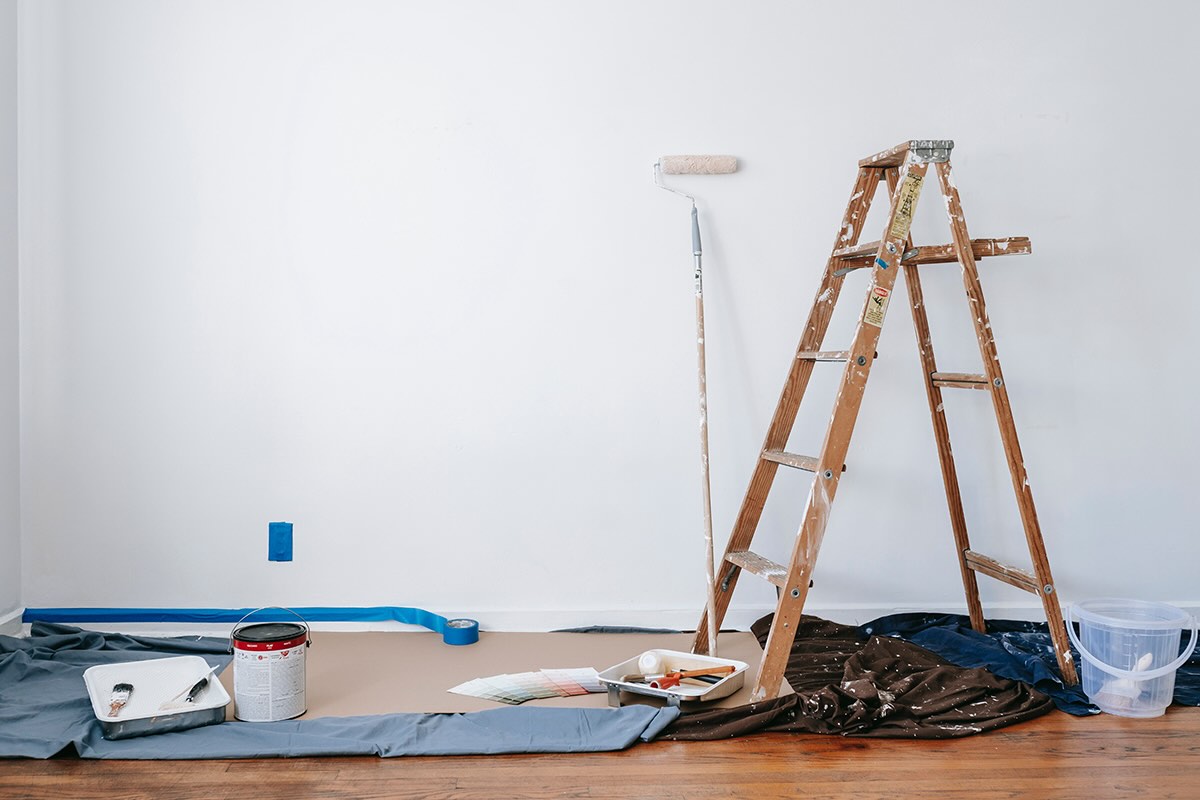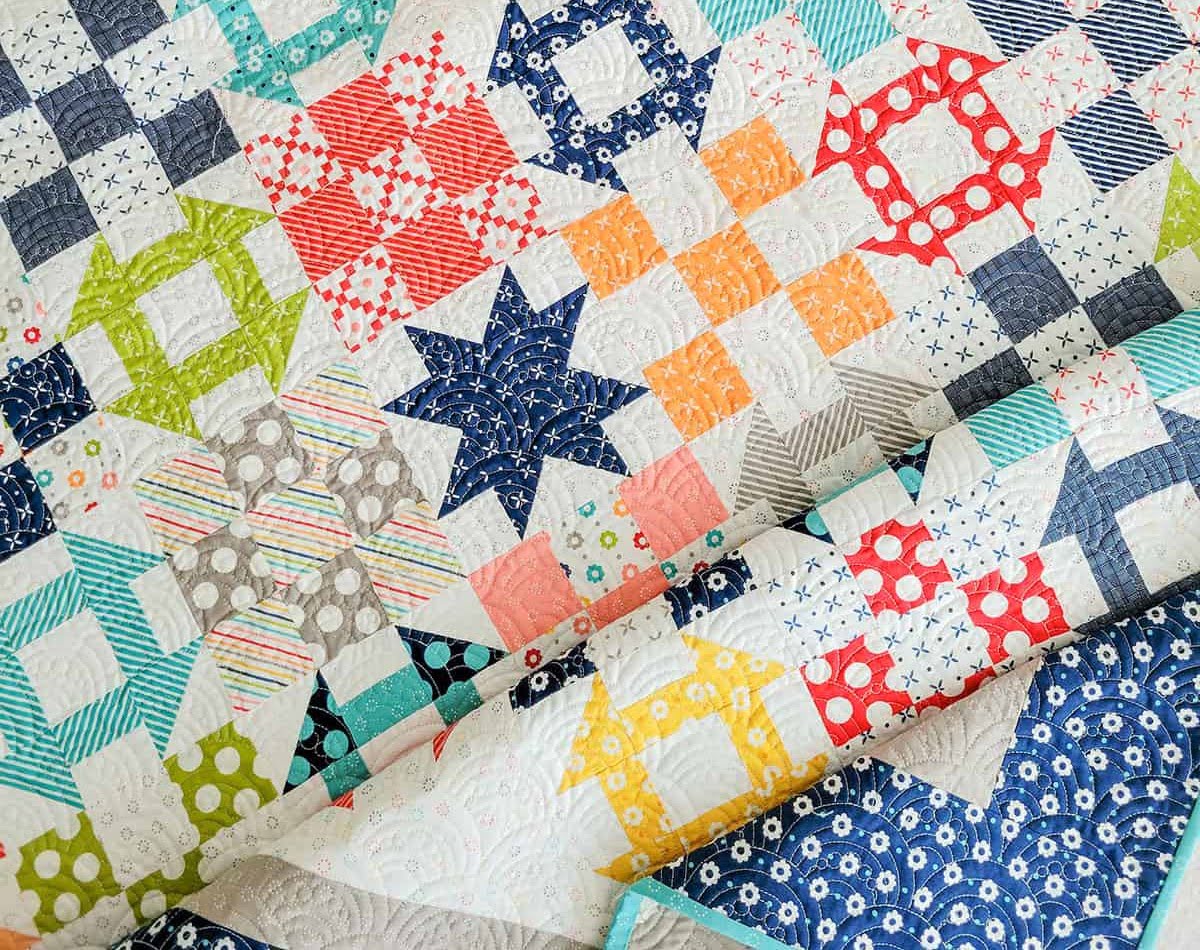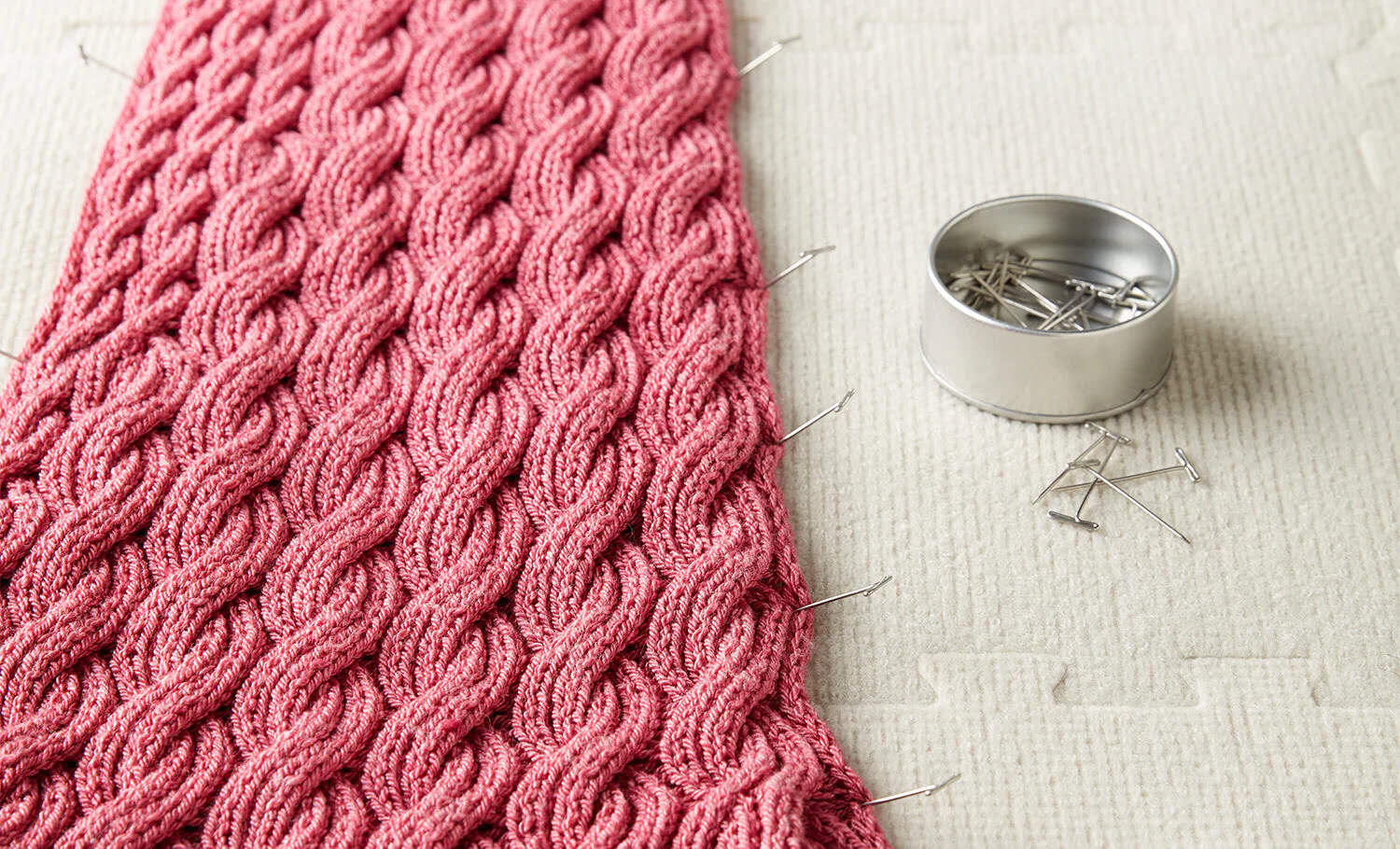Home>Create & Decorate>DIY & Crafts>Mastering Open Seam Pressing: Techniques And Tips
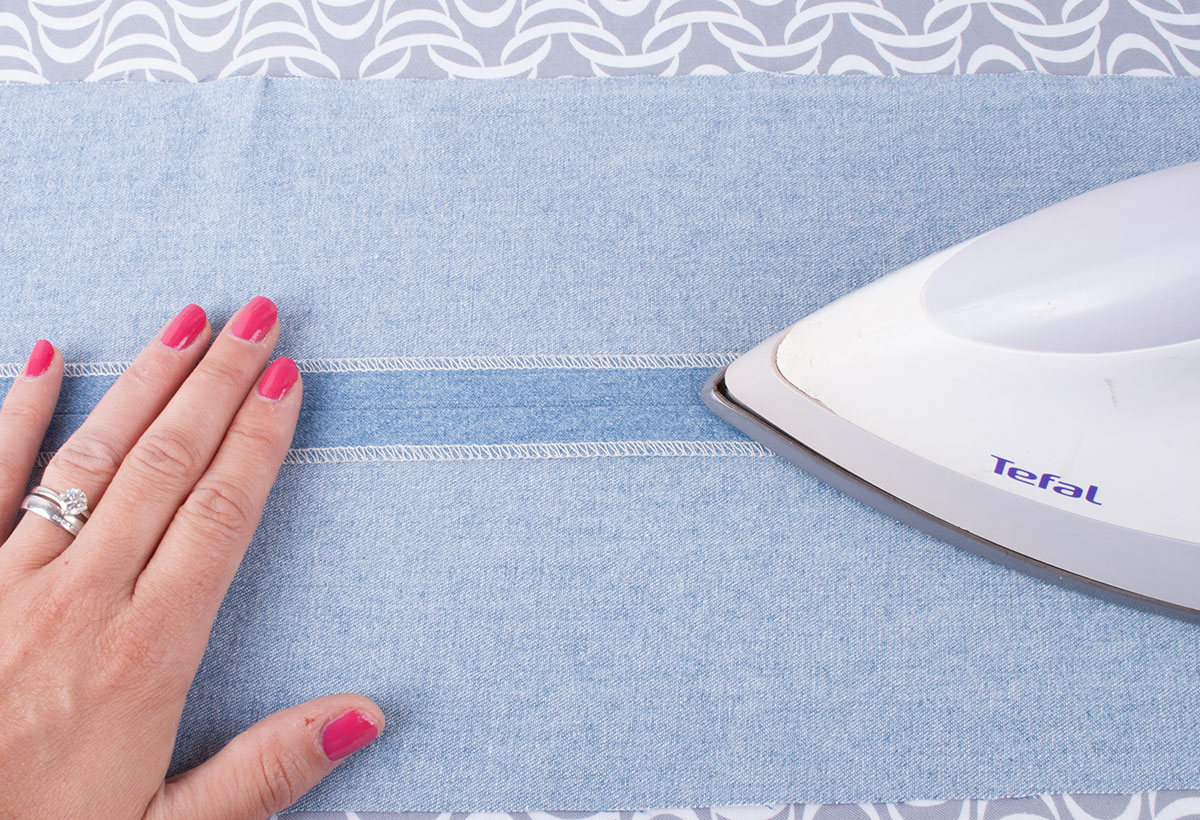

DIY & Crafts
Mastering Open Seam Pressing: Techniques And Tips
Published: February 15, 2024

Content Creator specializing in woodworking and interior transformations. Caegan's guides motivate readers to undertake their own projects, while his custom furniture adds a personal touch.
Discover expert techniques and tips for mastering open seam pressing in this comprehensive guide. Elevate your DIY & Crafts projects with these invaluable insights.
(Many of the links in this article redirect to a specific reviewed product. Your purchase of these products through affiliate links helps to generate commission for Twigandthistle.com, at no extra cost. Learn more)
Introduction
Open seam pressing is a fundamental skill in the world of DIY and crafts. Whether you're a seasoned seamstress or just starting out on your creative journey, mastering the art of open seam pressing can elevate the quality of your projects to professional levels. This technique involves pressing seams open to create a smooth and polished finish, essential for achieving professional-looking garments, quilts, and various other fabric-based creations.
Understanding the nuances of open seam pressing, from selecting the right tools and equipment to implementing the correct techniques, is crucial for achieving impeccable results. This comprehensive guide will delve into the intricacies of open seam pressing, providing valuable insights, techniques, and tips to help you elevate your crafting skills to new heights. So, let's embark on this journey to master the art of open seam pressing and unlock the potential to create flawless, professional-grade DIY projects.
Read more: Mastering Dye Techniques: Tips & Tricks
Understanding Open Seam Pressing
Open seam pressing is a crucial technique in the realm of sewing and crafting, playing a pivotal role in achieving impeccable and professional-looking results. This method involves pressing the seam allowances open, which refers to the fabric edges on either side of a seam. By carefully pressing the seam allowances open, you can create a flat and smooth surface, ensuring that the finished project lays perfectly flat and exhibits a polished appearance.
When sewing garments, quilts, or other fabric-based creations, open seam pressing is essential for several reasons. Firstly, it reduces bulk within the seams, preventing unnecessary thickness that can compromise the overall look and feel of the project. Additionally, pressing the seams open allows for precise and uniform topstitching, contributing to a refined and professional finish. Moreover, open seam pressing facilitates the shaping of fabric, enabling it to conform to the desired contours and drape elegantly.
Understanding the significance of open seam pressing also involves recognizing its impact on the longevity of the finished piece. By pressing the seams open, you can minimize wear and tear over time, as the fabric is less prone to strain and distortion. This technique promotes durability, ensuring that your meticulously crafted creations stand the test of time.
Furthermore, open seam pressing is integral to achieving a clean and polished interior finish. Whether it's a garment or a quilt, the interior appearance is a hallmark of quality craftsmanship. By pressing the seams open, you can create a visually appealing and professional-looking interior, showcasing your attention to detail and dedication to excellence.
In essence, understanding open seam pressing is about recognizing its multifaceted benefits and its transformative impact on the overall quality of your projects. It's a foundational skill that sets the stage for creating exceptional DIY and craft pieces, elevating them from amateur to professional standards. As we delve deeper into the world of open seam pressing, we'll explore the essential tools and techniques that will empower you to achieve flawless results and unleash your creative potential.
Choosing the Right Tools and Equipment
Selecting the appropriate tools and equipment is paramount when it comes to mastering open seam pressing. The right gear not only enhances the efficiency of the process but also contributes to the overall quality of the finished product. Here's a comprehensive look at the essential tools and equipment you need to achieve impeccable open seam pressing results:
1. Iron:
A high-quality iron is the cornerstone of successful open seam pressing. Look for an iron with adjustable temperature settings to accommodate different fabric types. Additionally, consider investing in an iron with a narrow, precision tip, which allows for targeted pressing in intricate areas.
2. Ironing Board:
A sturdy and spacious ironing board provides a stable surface for open seam pressing. Ensure that the ironing board cover is smooth and free of any lumps or bumps, as these imperfections can transfer onto the fabric during pressing.
3. Pressing Cloth:
A pressing cloth, typically made of muslin or a similar lightweight fabric, acts as a protective barrier between the iron and the fabric being pressed. It prevents direct contact between the hot iron and delicate or sensitive fabrics, safeguarding them from heat damage and shine.
4. Seam Roll:
A seam roll, also known as a sleeve roll, is a cylindrical cushion that facilitates pressing seams open in narrow or curved areas, such as sleeves or pant legs. It allows for seamless pressing without creating unwanted creases or imprints.
5. Tailor's Ham:
Similar to the seam roll, a tailor's ham is a curved, firm cushion used for pressing curved seams, darts, and other shaped areas. Its contoured surface mimics the body's curves, enabling precise and professional pressing of intricate details.
6. Point Presser and Clapper:
This multifunctional tool features a pointed end for pressing open seams and a flat surface for setting creases and seams. The clapper component, typically made of wood, aids in setting the pressed seam by quickly cooling and solidifying the fabric fibers.
7. Spray Bottle:
A spray bottle filled with water is handy for adding moisture to stubborn fabrics that require extra attention during pressing. Lightly misting the fabric can aid in achieving crisp and sharp seam lines.
By equipping yourself with these essential tools and equipment, you'll be well-prepared to embark on your open seam pressing journey with confidence and precision. Each item plays a crucial role in ensuring that your projects receive the meticulous attention they deserve, resulting in professional-grade craftsmanship that reflects your dedication to the art of DIY and crafts.
Techniques for Perfect Open Seam Pressing
Mastering the techniques for perfect open seam pressing is essential for achieving professional-grade results in your DIY and craft projects. By implementing the following techniques with precision and care, you can elevate the quality of your creations and imbue them with a polished and refined finish.
1. Proper Preparation
Before initiating the open seam pressing process, ensure that the fabric is meticulously prepared. This involves pre-washing and thoroughly pressing the fabric to eliminate any shrinkage or creases. Additionally, trim the seam allowances to the appropriate width, as this reduces bulk and facilitates seamless pressing.
2. Precision Positioning
Lay the fabric on the ironing board, ensuring that the seam allowances are positioned flat and open. Use your fingers or a seam roll to gently coax the seam allowances open, creating a smooth and even surface for pressing.
3. Controlled Heat and Pressure
Set the iron to the suitable temperature for the fabric type being pressed. Apply controlled pressure and gentle, consistent strokes along the open seam, allowing the heat to penetrate and set the seam allowances without causing distortion or shine on the fabric.
4. Strategic Support
In areas with curves or contours, such as sleeves or darts, utilize tailor's hams or seam rolls to provide strategic support during pressing. This ensures that the fabric conforms to the desired shape while maintaining a crisp and polished seam.
5. Finishing Touches
After pressing the seam allowances open, employ a point presser and clapper to solidify the pressed seam. The pointed end aids in defining the seam, while the clapper swiftly cools and sets the fabric fibers, resulting in a professional and enduring finish.
6. Repeat and Inspect
Repeat the pressing process for all relevant seams, ensuring uniformity and precision throughout the project. Once the pressing is complete, inspect the seams to verify that they are flat, smooth, and free of any creases or irregularities.
By mastering these techniques and incorporating them into your crafting routine, you can elevate the quality of your DIY projects and imbue them with a level of professionalism that sets them apart. Perfecting the art of open seam pressing is a transformative skill that empowers you to create flawless and enduring fabric-based creations, showcasing your dedication to craftsmanship and attention to detail.
Tips for Achieving Professional Results
Achieving professional results in open seam pressing requires a combination of precision, attention to detail, and a deep understanding of the fabric properties. Here are essential tips to elevate your open seam pressing skills and attain impeccable, professional-grade outcomes:
-
Fabric Selection: Choose high-quality fabrics that are well-suited for the intended project. Opt for fabrics that respond well to pressing and maintain their shape, as this significantly impacts the final appearance of the seams.
-
Test Pressing: Before pressing the seams of your actual project, conduct a test pressing on a scrap piece of fabric. This allows you to determine the ideal iron temperature and pressure for the specific fabric, ensuring that the pressing process yields optimal results without causing damage.
-
Consistent Pressure: Apply consistent pressure when pressing the seam allowances open. Uneven pressure can result in irregular seam lines and an inconsistent finish. Maintain a steady hand and ensure uniform pressure throughout the pressing process.
-
Cooling Time: Allow the pressed seams to cool and set before handling the fabric. This helps the fabric fibers to retain the pressed shape, resulting in crisp and defined seams that contribute to a professional appearance.
-
Directional Pressing: Consider the fabric grain and seam direction when pressing. For instance, when pressing seams on garments, follow the direction of the garment's design to ensure that the fabric drapes and hangs naturally.
-
Steam and Moisture: Utilize steam to your advantage when pressing certain fabrics. Steam can aid in achieving sharp and defined seam lines, particularly in fabrics that respond well to moisture. However, exercise caution and test the fabric's reaction to steam before extensive use.
-
Patience and Precision: Approach open seam pressing with patience and precision. Take the time to position the fabric accurately, adjust the seam allowances, and methodically press each seam to perfection. Rushing through the pressing process can compromise the final results.
-
Inspect and Adjust: After pressing each seam, inspect the results carefully. If any areas require further attention, reposition the fabric and apply additional pressing as needed. Attention to detail during this stage ensures that the finished project exhibits a professional and polished appearance.
By incorporating these tips into your open seam pressing routine, you can elevate the quality of your DIY and craft projects, infusing them with a level of professionalism that reflects your dedication to the art of crafting. These insights, coupled with a passion for precision, will empower you to achieve flawless and enduring results in your fabric-based creations.
Common Mistakes to Avoid
Mastering open seam pressing requires not only an understanding of the correct techniques but also an awareness of common mistakes that can compromise the quality of the finished project. By recognizing and avoiding these pitfalls, you can elevate your open seam pressing skills and ensure professional-grade results. Here are the common mistakes to steer clear of:
-
Excessive Heat: Applying excessive heat during pressing can lead to fabric damage, shine, or distortion. It's crucial to set the iron to the appropriate temperature for the fabric type and exercise caution to prevent overheating, especially with delicate or synthetic fabrics.
-
Inadequate Preparation: Failing to prepare the fabric adequately before pressing can result in subpar outcomes. Neglecting to pre-wash the fabric, remove creases, or trim seam allowances can impede the effectiveness of the pressing process and compromise the overall finish.
-
Rushing the Process: Rushing through open seam pressing can lead to uneven or incomplete results. Taking the time to position the fabric accurately, adjust seam allowances, and apply controlled pressure is essential for achieving professional-looking seams.
-
Neglecting Test Pressing: Skipping the step of conducting a test pressing on a scrap piece of fabric can be a costly mistake. Test pressing allows you to determine the ideal heat and pressure settings for the specific fabric, preventing irreversible damage to the actual project.
-
Ignoring Fabric Properties: Failing to consider the properties of the fabric being pressed can lead to unsatisfactory results. Different fabrics respond differently to heat and pressure, and understanding these nuances is crucial for achieving optimal seam lines.
-
Overlooking Seam Direction: Disregarding the direction of the seam when pressing can affect the overall appearance of the finished project. It's important to align the pressing direction with the fabric grain and the design of the garment or quilt to ensure a natural and polished finish.
-
Lack of Inspection: Neglecting to inspect the pressed seams for irregularities or imperfections can result in overlooked flaws. Thoroughly inspecting each seam allows for timely adjustments and ensures that the final project exhibits a professional and refined appearance.
By being mindful of these common mistakes and implementing strategies to avoid them, you can enhance the quality of your open seam pressing endeavors and consistently achieve exceptional results in your DIY and craft projects.
Conclusion
In conclusion, mastering the art of open seam pressing is a transformative journey that empowers DIY enthusiasts and crafters to elevate the quality of their fabric-based creations to professional standards. By delving into the intricacies of open seam pressing, understanding its significance, and honing the essential techniques, individuals can unlock the potential to produce flawless and enduring projects that reflect a dedication to craftsmanship and attention to detail.
Throughout this comprehensive guide, we've explored the fundamental aspects of open seam pressing, from the significance of pressing seams open to the selection of the right tools and equipment. Understanding the multifaceted benefits of open seam pressing, including reduced bulk, precise topstitching, and enhanced durability, underscores its pivotal role in achieving professional-grade results in sewing, quilting, and various crafting endeavors.
Moreover, the emphasis on choosing the right tools and equipment, such as high-quality irons, pressing cloths, and tailor's hams, underscores the importance of precision and meticulousness in the open seam pressing process. These tools not only enhance the efficiency of pressing but also contribute to the overall quality and longevity of the finished projects.
The techniques and tips provided in this guide serve as invaluable resources for individuals seeking to perfect their open seam pressing skills. From proper preparation and precision positioning to strategic support and finishing touches, these techniques are essential for achieving impeccable results and infusing DIY projects with a level of professionalism that sets them apart.
Furthermore, the insightful tips for achieving professional results, coupled with an awareness of common mistakes to avoid, equip crafters with the knowledge and foresight to consistently produce exceptional fabric-based creations. By embracing these tips and steering clear of common pitfalls, individuals can ensure that their open seam pressing endeavors yield flawless and enduring results, reflecting a commitment to excellence and a passion for the art of crafting.
In essence, mastering open seam pressing transcends the technical aspects of fabric manipulation; it embodies a dedication to precision, an appreciation for quality materials, and a commitment to creating enduring and professional-grade DIY and craft projects. By embracing the nuances of open seam pressing and integrating them into their creative endeavors, individuals can embark on a journey that leads to the realization of their artistic vision and the production of exceptional fabric-based creations.


